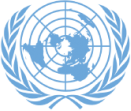Mr. President,
The Philippines welcomes this timely debate on peace building and conflict prevention as part of the New Agenda for Peace.
We also look forward to the Summit of the Future in September and the 2025 review of the UN peacebuilding architecture as important steps in strengthening and updating the UN toolbox for prevention of conflict and its recurrence, with Women, Peace and Security (WPS) and Youth, Peace and Security (YPS) perspectives, as highlighted by the Secretary-General in the New Agenda for Peace.
BARMM: Inclusive Peacebuilding
As a nation championing peacebuilding and sustaining peace, our success in the Bangsamoro Autonomous Region of Muslim Mindanao (BARMM) in the Southern Philippines is the centerpiece of our experience in building peace and forging new paths of cooperation through political solutions and inclusive peacebuilding.
For decades, conflict in the southern Philippines stemmed from historical injustices against the Moro people. Through years of negotiations, we achieved a comprehensive peace agreement in 2014 that addressed the root causes by establishing a new autonomous region with meaningful self-governance.
The passage of the Bangsamoro Organic Law in 2018 and the establishment of the BARMM in 2019 were pivotal milestones. This political track was complemented by a normalization process to decommission combatants and transform conflict-affected areas.
In its first year, the BARMM accomplished several major feats, including forming a transitional government, drafting a regional budget, and overseeing the decommissioning of thousands of fighters. These early successes demonstrate the dividends of peace.
The normalization track involves comprehensive socioeconomic development programs for former combatants and their communities. This includes social protection, capacity building, livelihood support, and infrastructure development. By addressing the needs of affected populations, we aim to sustain peace and prevent conflict relapse.
Women contributed greatly to the success of the BARMM. They were negotiators, researchers, educators and community organizers. We forged the BARMM across more than half a century of fighting between warring factions and clansmen.
Peace is indeed possible and patience pays. They are the best way forward with the least hurt and loss. Compassion as strategy lays the strongest foundation for lasting peace after bitter conflict. There is no fresh reason to look back in anger.
Our experience highlights key elements for successful conflict prevention and peacebuilding:
1. Inclusive political processes that address root causes of conflict
2. Complementary security and development tracks
3. Socioeconomic programs to support transition of former combatants
4. Building trust between parties through consistent engagement
5. International support for capacity building and development
The gains in Mindanao are encouraging but not irreversible. Challenges remain, including coalition-building in the new government and the presence of smaller militant groups. Sustained commitment from all stakeholders is crucial.
As we implement the peace agreement, we are already seeing improved security, increased investments, and new opportunities in the Bangsamoro region. Peace has brought prosperity within reach for millions of Filipinos.
The Philippine experience offers lessons for addressing protracted conflicts:
1. Patient, persistent dialogue can overcome decades of mistrust
2. Political solutions must be paired with concrete socioeconomic benefits
3. Normalization of former combatants is a long-term, multifaceted process
4. Building inclusive governance takes time and sustained support
Comprehensive Approaches to Conflict Prevention
We encourage the Security Council to prioritize comprehensive, context-specific approaches to conflict prevention. This includes supporting inclusive political processes, investing in socioeconomic development, and sustaining long-term peacebuilding efforts.
The Security Council must advance the enabling participation of all actors in peacekeeping and peacebuilding efforts through collaboration between the peacekeeping and political missions, while bridging the mandates of other UN agencies and beyond. These efforts must translate into early warnings of potential conflicts, concrete preventive actions, and transition plans for peace operations ahead of their withdrawals.
The New Agenda for Peace should emphasize holistic strategies that address root causes while delivering tangible peace dividends. It should also recognize the critical role of regional organizations and neighboring countries in facilitating dialogue and supporting implementation.
Conclusion
As partner, pathfinder, and peacemaker, the Philippines is ready to bring our experiences and insights to the Security Council as a non-permanent member candidate for the period 2027-2028, to demonstrate a focused and effective approach to peace and security challenges as we collectively work towards a more peaceful and prosperous world.
This is our commitment to inclusive, intergenerational, and lasting peace.
Thank you, Mr. President.


